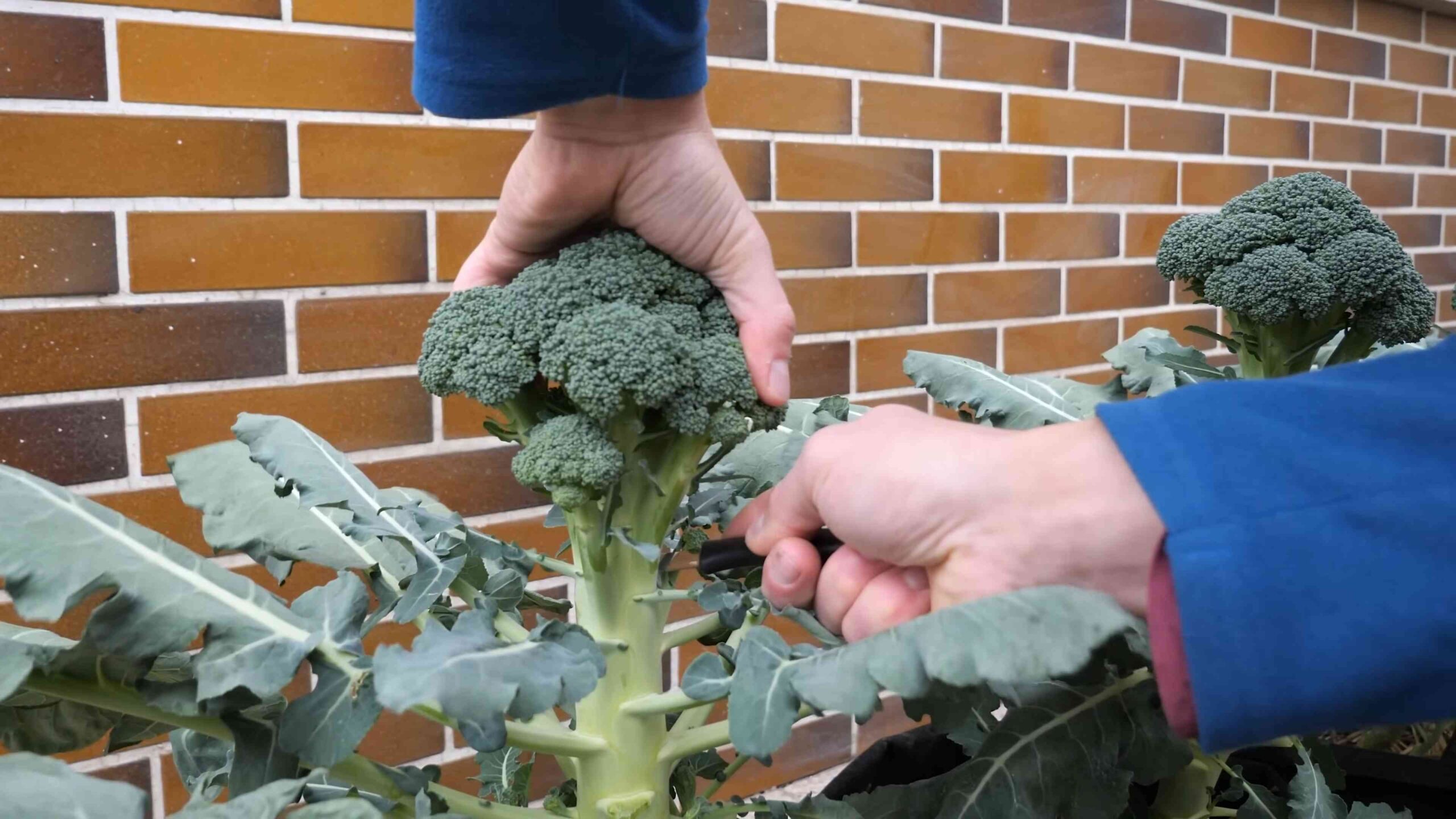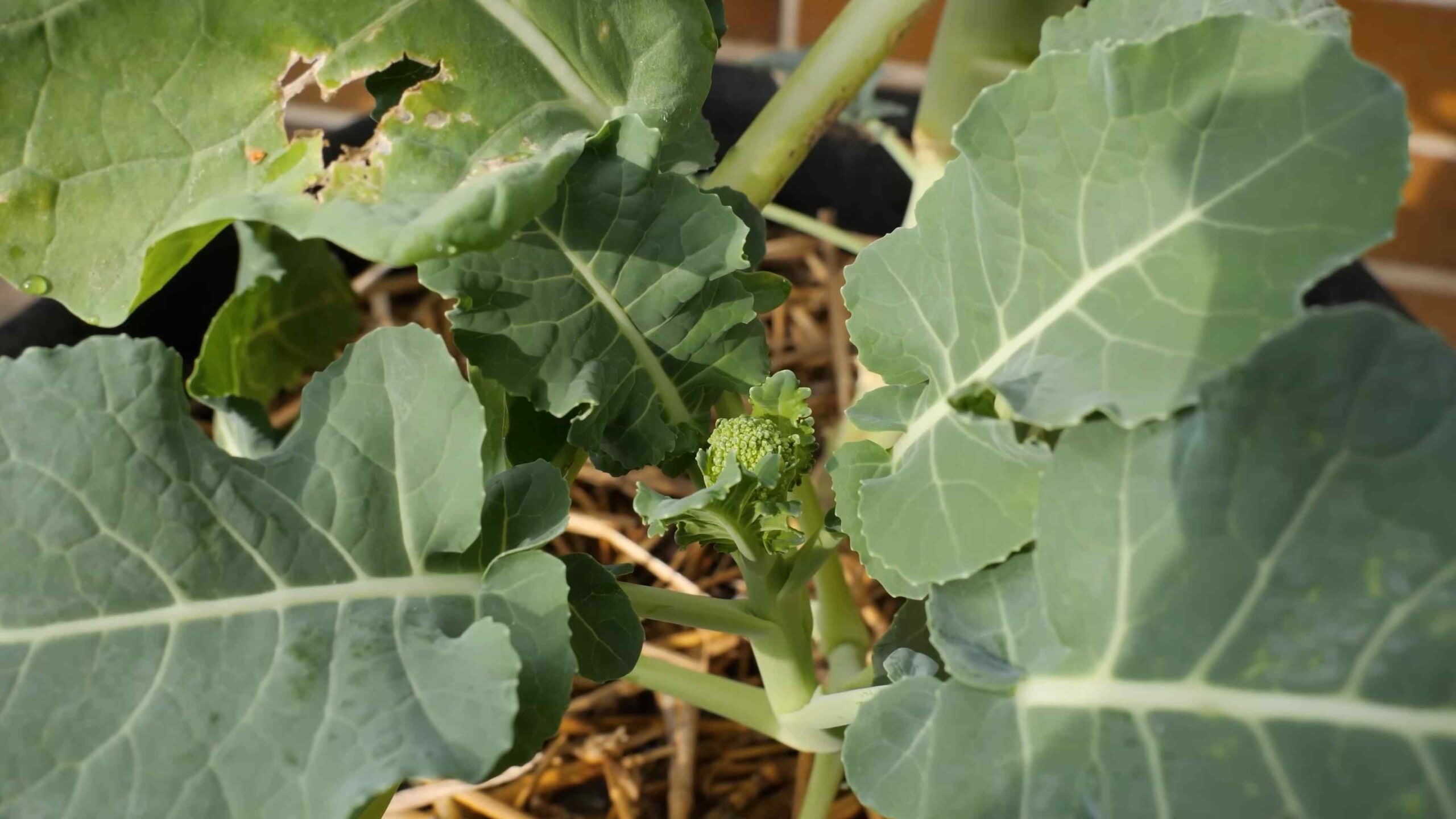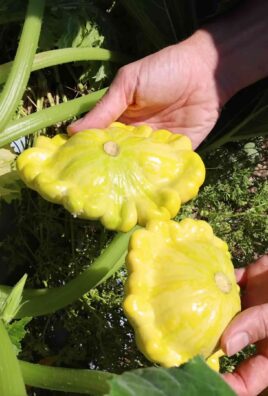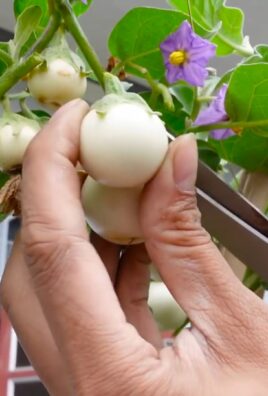Grow Broccoli at Home – sounds intimidating, right? But trust me, it’s way easier (and more rewarding!) than you might think. Forget those bland, overpriced heads at the grocery store. Imagine plucking crisp, vibrant broccoli straight from your own backyard, bursting with flavor and nutrients. That’s the magic we’re unlocking today!
For centuries, broccoli has been a culinary staple, tracing its roots back to the Roman Empire. They valued it not only for its taste but also for its health benefits. Now, you can tap into that ancient wisdom and cultivate your own little Roman garden, right outside your door.
Why should you bother with this DIY project? Well, for starters, growing your own food gives you complete control over what goes into it. No pesticides, no questionable additives – just pure, wholesome goodness. Plus, let’s be honest, there’s something incredibly satisfying about nurturing a plant from seed to harvest. It’s a fantastic way to connect with nature, de-stress, and impress your friends with your newfound green thumb. This guide will provide you with simple, effective tricks and hacks to grow broccoli at home, even if you’re a complete beginner. So, grab your gardening gloves, and let’s get started!

Growing Broccoli at Home: A Beginner’s Guide
Hey there, fellow gardening enthusiasts! I’m so excited to share my experience with growing broccoli at home. It’s surprisingly easy, incredibly rewarding, and nothing beats the taste of freshly harvested broccoli from your own garden. Trust me, once you’ve tasted homegrown broccoli, you’ll never go back to the store-bought stuff!
This guide will walk you through every step, from choosing the right variety to harvesting your delicious crop. Let’s get started!
Choosing the Right Broccoli Variety
Before you even think about planting, you need to decide which broccoli variety is right for you. There are tons of options, each with its own unique characteristics. Here are a few of my favorites:
* ‘Waltham 29’: This is a classic, reliable variety that produces large, dark green heads. It’s known for its excellent flavor and good disease resistance. It’s a great all-around choice for beginners.
* ‘Packman’: If you’re looking for a fast-growing variety, ‘Packman’ is your best bet. It matures quickly, producing medium-sized heads in about 50 days.
* ‘DiCicco’: This heirloom variety is known for its delicious flavor and its ability to produce side shoots after the main head is harvested, giving you a longer harvest period.
* ‘Romanesco’: Want something a little different? ‘Romanesco’ broccoli is a stunning, fractal-shaped variety with a mild, nutty flavor. It’s a real conversation starter!
* ‘Purple Sprouting’: This type of broccoli produces numerous smaller purple florets, which are delicious steamed or stir-fried. It’s also very cold-hardy.
Consider your local climate and growing season when making your choice. Some varieties are better suited to warmer or cooler climates. Check the seed packet or online descriptions for specific recommendations.
Starting Broccoli Seeds Indoors (Recommended)
While you can direct sow broccoli seeds, I highly recommend starting them indoors, especially if you live in an area with a short growing season. This gives your plants a head start and increases your chances of a successful harvest.
Here’s how I do it:
1. Gather Your Supplies: You’ll need seed starting trays or small pots, seed starting mix (not regular potting soil!), broccoli seeds, a spray bottle, and a grow light (optional, but highly recommended).
2. Fill the Trays/Pots: Moisten the seed starting mix and fill your trays or pots, leaving about half an inch of space at the top.
3. Sow the Seeds: Make a small indentation (about ¼ inch deep) in the center of each cell or pot. Place 2-3 broccoli seeds in each indentation. This increases the chances of at least one seed germinating.
4. Cover the Seeds: Gently cover the seeds with seed starting mix and lightly water with a spray bottle. You want the soil to be moist, but not soggy.
5. Provide Light and Warmth: Place the trays or pots in a warm location (around 70-75°F) and provide plenty of light. A grow light is ideal, but a sunny windowsill can also work. If using a windowsill, rotate the trays regularly to prevent the seedlings from leaning towards the light.
6. Keep the Soil Moist: Check the soil moisture daily and water as needed to keep it consistently moist. Avoid overwatering, which can lead to damping off (a fungal disease that kills seedlings).
7. Thin the Seedlings: Once the seedlings have developed their first true leaves (the leaves that appear after the initial seed leaves), thin them to one plant per cell or pot. Choose the strongest, healthiest-looking seedling and snip off the others at the soil line. Don’t pull them out, as this can disturb the roots of the remaining seedling.
Preparing the Garden Bed
While your broccoli seedlings are growing indoors, it’s time to prepare the garden bed. Broccoli needs well-drained, fertile soil with a pH of 6.0 to 7.0.
1. Choose a Sunny Location: Broccoli needs at least 6 hours of sunlight per day. Choose a location in your garden that receives plenty of sun.
2. Amend the Soil: If your soil is heavy clay or sandy, amend it with compost or other organic matter to improve drainage and fertility. I like to add a generous amount of compost to my broccoli bed.
3. Test the Soil pH: Use a soil testing kit to check the pH of your soil. If it’s too acidic (below 6.0), add lime to raise the pH. If it’s too alkaline (above 7.0), add sulfur to lower the pH.
4. Fertilize the Soil: Broccoli is a heavy feeder, so it needs plenty of nutrients. Before planting, incorporate a balanced fertilizer into the soil. I like to use a slow-release organic fertilizer.
5. Prepare the Planting Area: Rake the soil smooth and remove any rocks or debris.
Transplanting the Broccoli Seedlings
Once your broccoli seedlings have developed several sets of true leaves and are about 4-6 inches tall, they’re ready to be transplanted into the garden. This usually takes about 4-6 weeks after sowing the seeds.
1. Harden Off the Seedlings: Before transplanting, you need to harden off the seedlings to acclimate them to outdoor conditions. This involves gradually exposing them to sunlight, wind, and cooler temperatures over a period of 7-10 days. Start by placing the seedlings outdoors in a sheltered location for a few hours each day, gradually increasing the amount of time they spend outdoors.
2. Choose a Cloudy Day: Transplanting on a cloudy day will help reduce stress on the seedlings.
3. Dig the Holes: Dig holes that are slightly larger than the root balls of the seedlings. Space the holes about 18-24 inches apart.
4. Remove the Seedlings from the Trays/Pots: Gently remove the seedlings from their trays or pots, being careful not to damage the roots. If the roots are tightly bound, gently loosen them before planting.
5. Plant the Seedlings: Place the seedlings in the holes and backfill with soil, gently firming the soil around the base of the plants. Make sure the top of the root ball is level with the surrounding soil.
6. Water Thoroughly: Water the seedlings thoroughly after planting.
Caring for Your Broccoli Plants
Once your broccoli plants are in the ground, it’s important to provide them with proper care to ensure a healthy and productive harvest.
1. Water Regularly: Broccoli needs consistent moisture, especially during hot, dry weather. Water deeply and regularly, aiming to keep the soil consistently moist but not soggy.
2. Fertilize Regularly: Broccoli is a heavy feeder, so it needs regular fertilization. Side-dress the plants with a balanced fertilizer every 2-3 weeks. You can also use a liquid fertilizer.
3. Weed Regularly: Weeds can compete with broccoli plants for nutrients and water. Keep the garden bed free of weeds by hand-pulling or using a hoe.
4. Mulch the Plants: Mulching around the plants with straw, wood chips, or other organic matter will help retain moisture, suppress weeds, and regulate soil temperature.
5. Protect from Pests: Broccoli is susceptible to several pests, including cabbage worms, aphids, and flea beetles. Inspect your plants regularly for signs of pests and take action as needed. I like to use organic pest control methods, such as insecticidal soap or neem oil. You can also cover your plants with row covers to prevent pests from reaching them.
6. Watch for Diseases: Broccoli can also be affected by diseases, such as clubroot and black rot. Choose disease-resistant varieties and practice good sanitation to prevent diseases. If you notice any signs of disease, remove the affected plants immediately.
Harvesting Your Broccoli
The moment you’ve been waiting for! Harvesting your homegrown broccoli is incredibly satisfying.
1. Harvest When the Head is Firm and Tight: The best time to harvest broccoli is when the head is firm, tight, and dark green. The individual florets should be tightly closed. If the florets start to open and turn yellow, it’s time to harvest immediately.
2. Cut the Head with a Sharp Knife: Use a sharp knife to cut the head from the plant, leaving about 6 inches of stem.
3. Encourage Side Shoots: After harvesting the main head, the plant will often produce side shoots, which are smaller broccoli heads that grow from the sides of the stem. You can harvest these side shoots as they mature, extending your harvest period.
4. Store the Broccoli: Store freshly harvested broccoli in the refrigerator for up to a week. To keep it fresh, wrap it loosely in a damp paper towel and place it in a plastic bag.
Troubleshooting Common Broccoli Problems
Even with the best care, you might encounter some problems when growing

Conclusion
So, there you have it! Growing broccoli at home is not only achievable, but it’s also incredibly rewarding. From the satisfaction of nurturing a tiny seed into a vibrant, edible plant to the unparalleled freshness and flavor of homegrown produce, the benefits are numerous. We’ve walked you through the essential steps, from selecting the right variety and preparing your soil to warding off pests and harvesting your bounty.
But why is this DIY trick a must-try? Simply put, it empowers you to take control of your food source. You know exactly what goes into your broccoli – no mystery pesticides or long-distance transportation. Plus, the taste difference is undeniable. Store-bought broccoli often pales in comparison to the crisp, slightly sweet flavor of freshly harvested, homegrown heads.
Beyond the basic method, there’s plenty of room for experimentation. Consider these variations to tailor your broccoli-growing experience:
* Succession Planting: Plant new seeds every few weeks to ensure a continuous harvest throughout the growing season. This is especially useful in regions with longer growing seasons.
* Container Gardening: If you’re short on space, broccoli thrives in large containers. Just ensure they have adequate drainage and are placed in a sunny location. Choose dwarf varieties specifically bred for container growing.
* Companion Planting: Plant beneficial companions like marigolds (to deter pests) or dill (to attract beneficial insects) alongside your broccoli.
* Different Varieties: Explore different broccoli varieties beyond the standard Calabrese. Romanesco broccoli with its fractal florets is visually stunning and delicious. Purple sprouting broccoli offers a unique flavor and color.
* Broccoli Raab: Don’t forget about broccoli raab! It is a leafy green vegetable closely related to broccoli, but it is harvested for its tender leaves, stems, and small flower buds rather than the large head of broccoli.
Growing your own broccoli also fosters a deeper connection to nature and the food you eat. It’s a fantastic way to teach children about where their food comes from and the importance of sustainable practices. It’s a project that can be enjoyed by the whole family.
We wholeheartedly encourage you to give this DIY trick a try. Don’t be intimidated if you’re a beginner gardener. Broccoli is relatively easy to grow, and the rewards are well worth the effort. Start small, learn as you go, and most importantly, have fun!
Once you’ve harvested your first head of homegrown broccoli, we’d love to hear about your experience. Share your tips, successes, and even your challenges in the comments below. Let’s build a community of home broccoli growers and inspire others to embrace the joy of growing their own food. We are confident that you will find that growing broccoli at home is a rewarding experience.
Frequently Asked Questions (FAQ)
How much space does broccoli need to grow?
Broccoli plants typically need about 18-24 inches of space between them to allow for proper growth and air circulation. If you’re planting in rows, space the rows about 3 feet apart. For container gardening, use a pot that is at least 12 inches in diameter. Dwarf varieties can be planted closer together. Proper spacing is crucial for healthy growth and preventing diseases.
What kind of soil is best for growing broccoli?
Broccoli thrives in well-drained, fertile soil that is rich in organic matter. The ideal soil pH is between 6.0 and 7.0. Before planting, amend your soil with compost or well-rotted manure to improve its fertility and drainage. You can also add a slow-release fertilizer to provide essential nutrients throughout the growing season. A soil test can help you determine if your soil needs any specific amendments.
How often should I water my broccoli plants?
Broccoli plants need consistent moisture, especially during hot weather. Water deeply and regularly, aiming to keep the soil consistently moist but not waterlogged. Check the soil moisture by sticking your finger about an inch deep. If the soil feels dry, it’s time to water. Mulching around the plants can help retain moisture and suppress weeds. Avoid overhead watering, as this can increase the risk of fungal diseases.
What are some common pests and diseases that affect broccoli?
Common pests that affect broccoli include cabbage worms, aphids, flea beetles, and cabbage root maggots. Diseases include clubroot, black rot, and downy mildew. Regularly inspect your plants for signs of pests or diseases. Use organic pest control methods such as insecticidal soap, neem oil, or Bacillus thuringiensis (Bt) to control pests. Ensure good air circulation and avoid overhead watering to prevent diseases. Crop rotation can also help reduce the risk of soilborne diseases.
When is the best time to harvest broccoli?
Broccoli is ready to harvest when the head is firm and the florets are tightly closed. The ideal head size will vary depending on the variety, but generally, you should harvest before the florets start to open and turn yellow. Use a sharp knife to cut the head from the plant, leaving a few inches of stem. Side shoots may develop after the main head is harvested, providing additional smaller harvests.
Can I grow broccoli in the shade?
Broccoli needs at least 6 hours of direct sunlight per day to thrive. While it can tolerate some partial shade, especially in hot climates, insufficient sunlight will result in weak, leggy plants with small heads. Choose a sunny location for your broccoli plants to ensure optimal growth and yield.
What fertilizer should I use for broccoli?
Broccoli is a heavy feeder and benefits from regular fertilization. Use a balanced fertilizer with a ratio of 10-10-10 or 14-14-14. Apply fertilizer at planting time and then again every 3-4 weeks throughout the growing season. You can also use organic fertilizers such as compost tea or fish emulsion. Avoid over-fertilizing, as this can lead to excessive foliage growth at the expense of head development.
How do I prevent broccoli from bolting (flowering prematurely)?
Bolting is often caused by stress, such as extreme temperatures or inconsistent watering. Choose bolt-resistant varieties and plant them at the appropriate time of year to avoid temperature extremes. Ensure consistent watering and provide shade during hot weather. Mulching can also help regulate soil temperature and prevent bolting.
Can I eat the broccoli leaves?
Yes, broccoli leaves are edible and nutritious. They have a slightly bitter taste similar to kale or collard greens. You can cook them in the same way you would cook other leafy greens, such as sautéing, steaming, or adding them to soups and stews. Choose young, tender leaves for the best flavor and texture.
How do I store harvested broccoli?
Store harvested broccoli in the refrigerator in a plastic bag or container. It will keep for about 3-5 days. To prolong its shelf life, you can blanch it for 3 minutes and then freeze it. Blanching helps to preserve the color, flavor, and texture of the broccoli.





Leave a Comment